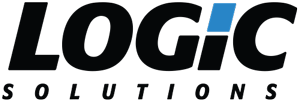OTR PERFORMANCE
MOBILE APP | ANDROID | CONNECTED VEHICLES

Client Background
The Problem
OTR has previously developed and manufactured a device that puts incredible diagnostic functionality in the hands of vehicle operators to help them troubleshoot vehicular issues. They sought to improve upon their existing device by bringing a touch-screen Android device to market in order to deliver real-time vehicle data to truckers while offering the same great functionality of their original screenless device. This solution would afford vehicle operators a huge amount of control from the comfort of their vehicle cockpit. Creating a new Android mobile application presented several big challenges:
Application Design: Vehicle-based applications must be easy and safe to use, and prevent drivers from initiating maintenance functions improperly or attempting to use certain application functions while driving. The application interface needed to be intuitive, deliver useful data and functionality in an easy-to-interpret fashion, and allow drivers to customize their data feeds to suit their needs. All of this in a 7” Android touchscreen tablet.
Application Development: OTR had an existing DTC (Diagnostic Trouble Codes) + AFT (Aftertreatment System) Reset Tool, which allows drivers to execute dealer-level maintenance functions like fault code resets. DTC + AFT Reset allowed users to reset a truck’s fault code timers and clear the system of errors, but it didn’t have a built-in display for users to view what the fault codes are. OTR also had an ELD connector that could provide operators with fluid temperatures, oil pressure, RPMs, etc.
The new Android application needed to connect and interface with both DTC + AFT and ELD tools in order to visually present vehicular data to the driver and reliably provide the latest information so that operators could be better informed about their truck’s performance.
Admin Web Portal: An admin web portal would be necessary for OTR to control the release and distribution of important application software updates and manage users. In the future, the admin web portal could be expanded for other administrative functions.
The Solution
Logic Solutions was awarded the contract at the end of 2018 based on our expertise in UI/UX design, our experience developing a wide array of custom Android and iOS solutions, extensive web application development and database experience. Logic designed and developed an aesthetically pleasing, easy-to-use, safe, reliable, Android application called OTR DigitalDash and a web-based admin portal for the client’s essential administrative functions.
Project Overview
Visual and UX/UI design of a device-specific Android application for semi-truck operators to monitor their crucial vehicle data and perform dealer-level functions
Application development in the NativeScript mobile framework
Integration of a 3rd-party firmware and API to facilitate smooth device-to-vehicle communication
Custom front-end and back-end development of a web-based admin tool for the client to release device updates and track usage data
“Logic Solutions has been great from start to finish with the follow through with the project. We had weekly meetings to ensure the project was going according to plan. I am thankful that we hired Logic Solutions for this project and look forward to seeing where this project takes us.”
– Jason Chise, President of OTR Performance
Application Design
Logic applied UX and UI design best practices, researched the needs of vehicle operators, and reviewed client requirements to create a visual design and user interface that is attractive and easy-to-use, but all about practical functionality and usability at its core. The overall experience of OTR DigitalDash is frustration-free, safe, and satisfying with the following features:
- Dark Mode – The entire application was designed in “dark mode”, a dark, low contrast aesthetic that protects the eyes of vehicle operators from fatigue, and eliminates dangerous distractions when driving in low light conditions.
- Customizable Live-Data Feeds – One of the core functions of DigitalDash is to deliver live vehicle data feeds, customizable by the vehicle operator. Logic designed a numerical data-tile view, an attractive gauge view, and a split data-tile and fault-code view. These designs allow up to 8 simultaneously-delivered data feeds to be displayed while allowing the vehicle operator to easily choose which data-feeds are present and where they are placed through an intuitive touch-screen interface. Data feeds include:
- Engine oil levels
- Engine speed (RPMs)
- DPF (diesel particulate filter) soot levels
- Engine oil temperature
- Engine oil pressure
- Engine regen status
- Engine load percentage
- Boost pressure
- Fault Code Display and Reset – Fault-codes from the vehicle are displayed in an attractive, chronological display, that includes fault code reference numbers and detailed descriptions. The application design allows for a high-level display of all fault-codes for quick reference, and deeper dives into information on the nature of the faults and when they occurred. This allows drivers to keep track of patterns in vehicle performance and stay one step ahead of maintenance issues.
- Safety and Usability – Logic designed DigitalDash’s user-interfaces with extreme care to assist users with quickly and easily accessing data and maintenance functions through a clearly-labeled navigation bar. Logic included clear indicators and instructions throughout the app, such as:
- Well-defined prompts that require user confirmation to progress through multi-step maintenance functions.
- Warnings and instructions dominate the entire screen when the user is about to take any action that could harm the vehicle if done improperly, and confirmation is required to continue.
- Possible actions are clearly defined on each application screen through consistent labeling and button styling.
- Touch-screen button targets are carefully sized to make sure buttons and functions are easy to tap with a finger.
Application Development
Logic’s experienced development team engineered a smooth-functioning Android tablet application that gives vehicle operators control over vehicle data and maintenance. The team worked and communicated closely with OTR and 3rd parties to implement evolving needs, and emerged with an Android-based touch-screen application that truly empowers vehicle operators to stay on top of their vehicle data and save precious time and money. A variety of technologies and integrations were necessary, along with great internal and client communication, to bring DigitalDash to life, including:
- NativeScript Framework – In order to provide a future-proof application development solution that is able to function natively in both Android and iOS, Logic employed the NativeScript framework. This JavaScript framework provided a flexible, forward-thinking, solution to the varied application requirements. Although the current project is only for Android tablets, OTR might include additional iOS functionality in the future.
- 3rd Party Firmware and API Integration – Logic integrated a 3rd-party library, custom firmware, and an API solution to allow the application to communicate seamlessly with vehicle hardware and provide a wide array of live-data feeds and fault-code reporting information.
- Client Device Integration – OTR’s popular DTC + AFT reset functionality tool allows vehicle operators to execute dealer-level maintenance functions like forced engine regeneration and fault-code resets. Vehicular data from DTC + AFT feeds into an existing ELD connector that was plugged into the vehicle’s J1939 port. Logic created DigitalDash to connect to the ELD via Bluetooth to grab information about the vehicle’s performance and display it to the truck’s operator on DigitalDash’s intuitive interface.
Admin Web Portal
Logic quickly identified a cost-effective and highly-functional admin solution for OTR to add/manage users and manage Android application versions. The application is not published on the Google Play store, so OTR needed a way to send application updates to all users. Other key features of the admin portal include:
- PHP backend – Logic developed a custom PHP back-end for the Admin site, ensuring reliable data access and storage.
- mySQL database – data storage was inside of a mySQL database.
- Admin LTE – A Bootstrap 3 solution was utilized to develop a web-based admin front-end that provides all necessary admin functionality without re-inventing the wheel.





